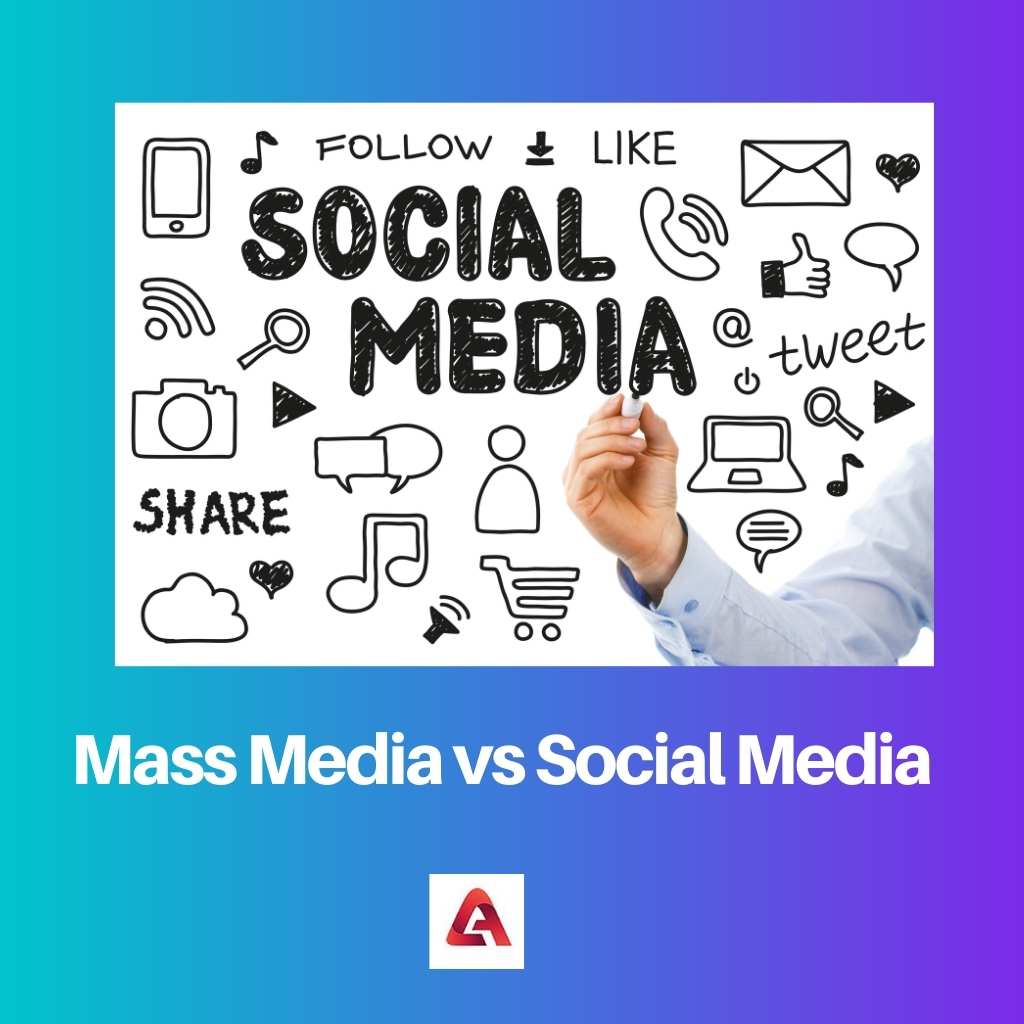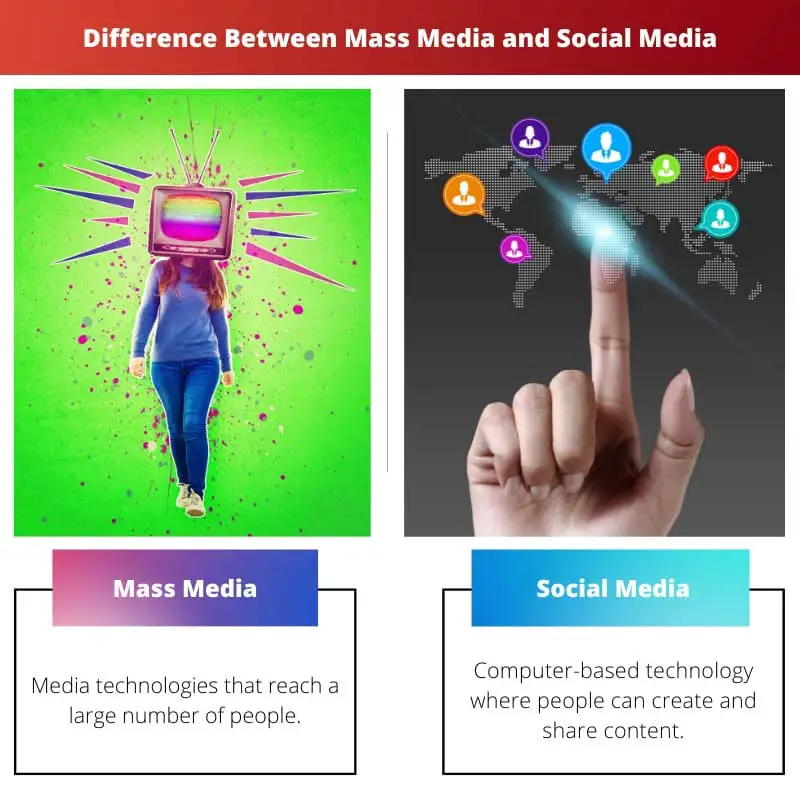Mass media refers to technological devices that reach a large number of people, whereas social media refers to computer-based technology that allows users to create and distribute information as well as participate in social networking.
Traditional forms of media were once the sole means to get your message out to the public. However, in today’s digital landscape, there are numerous new means for reaching a large (or niche) audience.
Key Takeaways
- Mass media includes traditional communication channels like television, radio, and newspapers, while social media consists of online platforms that enable users to create and share content.
- A few companies control mass media, whereas social media encourages user-generated content and diverse perspectives.
- Social media allows for real-time interaction and feedback, while mass media relies on one-way communication and slower response times.
Mass Media vs Social Media
Mass media is any form of media that reaches a large audience, including television, radio, newspapers, magazines, etc. It is traditionally seen as a credible. Social media is used to describe any online platform that allows users to create and share content with other users over the internet.

Mass media, whether written, spoken, or broadcast, has a huge impact on the general public. Brands can raise brand awareness through television commercials, billboards, and social media channels.
When it comes to branding, businesses look for the most efficient ways to communicate their messages, such as websites, social media channels, blogs, and forums.
Social media is an internet platform where people socialize with one another. You may communicate with your friends and family, as well as the rest of the globe.
The social media platform facilitates the interchange of information, ideas, interests, and emotions. Everyone, from performers to businesspeople, athletes to politicians, uses social media.
They use social media to promote their shows, hobbies, and personal information.
Comparison Table
| Parameters of Comparison | Mass Media | Social Media |
|---|---|---|
| What is it | Media technologies that reach a large number of people. | Computer-based technology where people can create and share content |
| Communication | One-way communication | Two-way communication |
| Reach | Lower | Higher |
| Public Role | Audience | Audience as well as content creators |
| Involves | Print media and broadcast media | Facebook, Instagram, Pinterest, Twitter, YouTube, Reddit, LinkedIn, etc. |
What is Mass Media?
It is the most effective means of communicating with the large majority of the general people. Platforms such as radio, television, newspapers, and magazines are examples of mass media.
Print media and broadcast media are the two main types of mass media. Newspapers and magazines are examples of print media, whereas radio, television, and films are examples of broadcast media.
Various companies have employed these tactics for many years, with highly excellent outcomes. Even now, marketing strategies such as television commercials and print adverts produce very successful sales.
Broadcast media, which includes a cinema, radio, recorded music, and television, transmits information electronically. Internet and mobile mass communication are both examples of digital media.
Simply put, mass media is a technology used to communicate with or reach a large number of people. Mass media is the principal mode of communication for the general people to communicate with one another and on a larger scale.
Newspapers, radio, television, the internet, magazines, and other forms of mass media are among the most popular. The phrase “mass media” describes media technologies used to disseminate information to a large number of people.
The major function of mass media is to disseminate a variety of messages through television, movies, magazines, and newspapers.
When they choose the right type of mass media channel for their business, they may express their ideas and carry out branding initiatives.
People are informed, educated, and entertained in several ways via the media. Brands may educate customers on how to get the most out of their products.
What is Social Media?
Social media is a platform that may be used for not just news-related themes but also for sharing a person’s life, brand promotion, and people who want to stay linked indifferent to their location throughout the world.
The internet and social media are today’s virtual worlds for staying in touch with everyone. Social media is a virtual world of messages, phone calls, and posts.
Individuals use social media sites such as Facebook and WhatsApp to create profiles and share photographs and ideas. Some apps and websites can be accessed via cellphones, tablets, laptops, and PCs.
To participate, individuals must create a profile on a certain social media platform. Through these social media networks, you can message, phone, or interact with anyone.
There have been numerous implications of social media on people’s lives in recent years. There were both positive and negative consequences.
Nowadays, social media is an important component of everyday life, particularly social life. When an accident occurs, most people utilize social media to express their feelings.
There is the idea of “posts” that are commonly used in most social media platforms such as Instagram or Facebook. This is the primary method of disseminating information on various Social Media networks.
Individuals can not only be informed but also communicate as a result of Social Media. They can communicate with friends, relatives, and families. This is the most significant advantage of Social Media over Traditional Media.

Main Differences Between Mass Media and Social Media
- Mass media is a media technology that helps get the message across to a wide variety of people, whereas social media is an online technology through which people can create and share their own content.
- Mass media is a form of one-way communication, while social media is a form of two-way communication.
- The audience reach of mass media is lower while social media’s is higher.
- The role of the public in mass media is as the audience, while in social media, the public acts as both the audience and the content creators.
- Mass media consists of print and broadcast media, whereas Social media consists of Twitter, Facebook, Instagram, etc.





